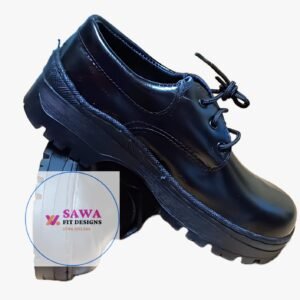Learn how to sell products online in Kenya with this step-by-step guide. Discover product ideas, platforms, and marketing tips to grow your business.
-
Back to School Shoes -Genuine Pure Leather
Original price was: KSh1,300.KSh1,000Current price is: KSh1,000.Select options This product has multiple variants. The options may be chosen on the product pageClear3234242526272829303133 -
Boys Black School Shoes
Original price was: KSh1,500.KSh1,200Current price is: KSh1,200.Select options This product has multiple variants. The options may be chosen on the product pageClear363835373940 -
Slip-On School Shoes Boys
Original price was: KSh2,500.KSh2,000Current price is: KSh2,000.Select options This product has multiple variants. The options may be chosen on the product pageClear323436382728293031333537 -
Girls School Shoes (Buckle)
Original price was: KSh1,800.KSh1,400Current price is: KSh1,400.Select options This product has multiple variants. The options may be chosen on the product pageClear3837
How to Sell Products Online in Kenya: A Step-by-Step Guide for Business Owners
Selling products online in Kenya offers a way to reach customers beyond your local area, cut costs, and grow your business. With internet usage at 45% and a young population driving demand, Kenya’s e-commerce market is thriving, projected to hit Ksh. 200 billion by 2025. Whether you’re selling clothes, electronics, or digital products, this guide walks you through practical steps to set up and succeed in your online business.
Why Sell Products Online in Kenya?
Kenya’s digital economy is growing fast. Over 21 million Kenyans are online, and mobile commerce dominates, with many shoppers using smartphones. Social media platforms like Instagram and WhatsApp are key for product discovery, with 70% of consumers finding items there before buying. Online selling lets you skip high rent for physical stores, operate 24/7, and use data to understand your customers. Plus, platforms like M-Pesa make payments seamless, aligning with how Kenyans shop.
Step 1: Research Your Market and Choose Products
Before you start, know what sells. Kenya’s market leans toward affordable, high-demand items. Use tools like Google Trends or social listening platforms to spot trends. For example, electronics like phone accessories, fashion items like shapewear, and health products like supplements move quickly.
Here’s how to pick the right products:
- Solve a Problem: Find unmet needs. For instance, eco-friendly products like biodegradable phone cases tap into growing environmental awareness.
- Check Demand: Use keyword tools to see what Kenyans search for, like “buy phone cases in Kenya” or “organic skincare.”
- Consider Logistics: Lightweight, easy-to-ship items like jewelry or digital products reduce delivery costs.
- Focus on Niches: Stand out with unique offerings like Kenyan coffee blends or handmade crafts.
Avoid oversaturated markets unless you can differentiate. For example, instead of generic phone cases, sell custom-designed ones with Kenyan cultural patterns.
Step 2: Decide on Your Business Model
Your business model shapes how you operate. Here are three common approaches:
- E-commerce Store: Build your own website for full control. Platforms like WordPress with WooCommerce or Shopify let you create professional stores. You manage everything, from branding to payments, but it requires more upfront work.
- Marketplaces: Sell on platforms like Jumia, Kilimall, or PigiaMe. These are easier to start with since they have built-in audiences. Jumia, for instance, reports 40% of its sellers earn over Ksh. 50,000 monthly. You’ll pay commissions, though.
- Social Media: Use Instagram, Facebook, or WhatsApp to sell directly. Create a business profile, post high-quality product photos, and engage followers. This works well for small-scale sellers but needs consistent content creation.
Dropshipping is another option. You market products, and suppliers handle inventory and shipping. It’s low-risk but gives less control over quality and delivery. Choose based on your budget, skills, and goals.
Step 3: Set Up Your Online Store
If you opt for your own website, keep it simple and professional. A good site builds trust and makes shopping easy. Here’s how to set it up:
- Choose a Platform: WordPress with WooCommerce is budget-friendly and flexible. Shopify offers robust features but costs more. Both support M-Pesa, a must for Kenyan customers.
- Design for Mobile: Most Kenyans shop via smartphones, so prioritize mobile-friendly design. Test your site on different devices.
- Add Payment Options: Integrate M-Pesa, Visa, and Mastercard. Payment gateways like IntaSend simplify this, reducing cart abandonment.
- Include Clear Details: List your business name, contact info, and physical address (if applicable). Use colors that match your brand.
For marketplaces, sign up as a seller, upload product details, and set prices. On Jumia, you must be Nairobi-based and sell new products. Kilimall also requires new items but offers similar ease of setup.
Step 4: Source Quality Products
Your products’ quality builds your reputation. If you’re selling physical goods, find reliable suppliers. For example:
- Local Suppliers: Partner with Kenyan manufacturers for crafts or agricultural products like tea. This cuts shipping costs and supports local businesses.
- International Suppliers: Source electronics or accessories from platforms like Alibaba. Verify supplier reliability to avoid fakes.
- Digital Products: Create e-books, online courses, or graphics yourself or hire freelancers from platforms like Upwork.
For dropshipping, use trusted suppliers with fast shipping to Kenya. Always test products before selling to confirm quality.
Step 5: Optimize for Search Engines (SEO)
To attract customers, your store needs to rank on Google. Use these SEO strategies:
- Keyword Research: Find terms like “buy electronics in Kenya” or “Kenyan fashion online” using free tools like Google Keyword Planner.
- On-Page SEO: Include keywords in product titles, descriptions, and blog posts. For example, write “Affordable Kenyan Coffee Blends” instead of just “Coffee.”
- Local SEO: Add your location to your Google My Business profile. Encourage customers to leave reviews, as 88% of shoppers trust online reviews as much as personal recommendations.
- Regular Updates: Refresh content to stay relevant. Post blogs about your products, like “Top 5 Phone Accessories for Kenyans in 2025.”
Step 6: Leverage Social Media Marketing
Social media is a powerful tool in Kenya. Instagram and WhatsApp are especially effective for visual products like clothes or jewelry. Try these tips:
- Post Quality Content: Share clear photos and short videos. For example, show how to use fitness equipment or style a dress.
- Use Hashtags: Include #KenyaFashion or #NairobiDeals to reach local audiences.
- Engage Followers: Respond to comments and messages quickly. Join Facebook Groups for specific niches, like camping gear enthusiasts.
- Run Ads: Use targeted Facebook or Instagram ads to reach your audience. Focus on demographics, like young women for shapewear.
Step 7: Streamline Delivery and Logistics
Fast, reliable delivery keeps customers happy. Kenya’s infrastructure can be challenging, so plan carefully:
- Choose Shipping Partners: Use DHL, Sendy, or Posta Kenya for reliable delivery. Compare rates for cost-effectiveness.
- Offer Options: Provide express or standard shipping. Free shipping for high-value orders can boost sales.
- Set Clear Expectations: Share tracking details and estimated delivery times. For example, Kilimall requires pre-payment, so communicate delays upfront.
- Local Pickup: Offer collection points to reduce last-mile costs, especially for bulky items.
Step 8: Build Trust with Reviews and Customer Service
Trust drives sales in Kenya, where scams are a concern. Build credibility with these steps:
- Collect Reviews: Ask satisfied customers for feedback. Verified reviews on your site or marketplaces boost confidence.
- Offer Guarantees: Provide warranties or return policies, especially for electronics, as customers value after-sales support.
- Be Responsive: Answer inquiries within hours. Use WhatsApp for quick chats, as many Kenyans prefer it.
Step 9: Analyze and Improve
Use data to grow. Tools like Google Analytics show what’s working. Track:
- Sales Trends: See which products sell best and stock more.
- Customer Behavior: Notice if carts are abandoned due to high shipping costs and adjust.
- Promotions: Run discounts during holidays like Black Friday, popular on platforms like Kilimall.
Start small, test strategies, and scale what works. Reinvest profits into better products or marketing.
Legal and Tax Considerations
Register your business with Kenya’s Business Registration Service to stay compliant. Get a KRA PIN for tax purposes. If selling digital products, avoid infringing on copyrights. Consult a local accountant to handle taxes, as e-commerce regulations evolve.
Profitable Product Ideas for Kenya
Based on market trends, consider these products:
- Electronics: Phone accessories like chargers and earphones sell well due to high smartphone penetration.
- Fashion: Shapewear and jewelry appeal to style-conscious buyers.
- Health Products: Organic supplements and fitness gear cater to wellness trends.
- Digital Products: Swahili language courses or Kenyan music beats attract local buyers.
- Eco-Friendly Items: Bamboo utensils or solar chargers align with sustainability goals.
Final Tips for Success
Selling online in Kenya takes patience and strategy. Start with a clear plan, focus on quality, and prioritize customer experience. Use platforms that suit your scale, whether it’s a marketplace for quick setup or a website for control. Stay consistent with marketing, and adapt based on data. With Kenya’s e-commerce market growing, now’s the time to act.
-
Back to School Shoes -Genuine Pure Leather
Original price was: KSh1,300.KSh1,000Current price is: KSh1,000.Select options This product has multiple variants. The options may be chosen on the product pageClear3234242526272829303133 -
Boys Black School Shoes
Original price was: KSh1,500.KSh1,200Current price is: KSh1,200.Select options This product has multiple variants. The options may be chosen on the product pageClear363835373940 -
Slip-On School Shoes Boys
Original price was: KSh2,500.KSh2,000Current price is: KSh2,000.Select options This product has multiple variants. The options may be chosen on the product pageClear323436382728293031333537 -
Girls School Shoes (Buckle)
Original price was: KSh1,800.KSh1,400Current price is: KSh1,400.Select options This product has multiple variants. The options may be chosen on the product pageClear3837



